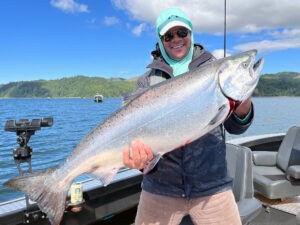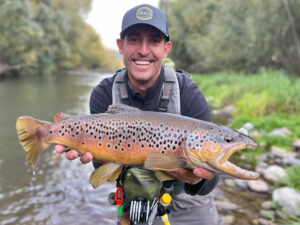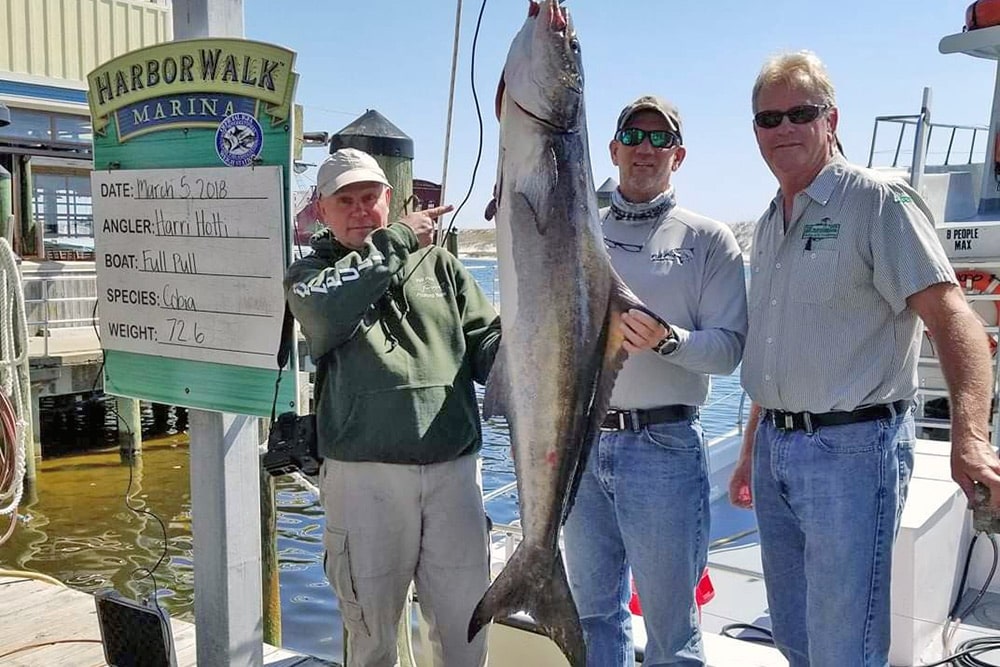
For decades, the cobia migration along the Florida Panhandle in the spring brought Chris Wagner, of Fort Walton Beach, the most incredible fishing of his life. “Up in the tower of our Hatteras, the wind at our backs, the sun in my eyes, spotting those fish, that’s what I loved,” he said. “When I saw one, it was like an electrical shock went through my body.”
Wagner, a retired HVAC contractor, had those spring days for more than 30 years. He started fishing for cobia in 1989, and he got his own boat in ’90. “All through the ‘90s we had double-digit sightings, days when we saw 60 to 70 fish,” Wagner told me recently. “From ’97 through the early 2000s we’d get 100-pounders, routinely.”
Tournaments grew big, big cash and big crowds. Wagner and his team took first place in many of them. Some they won repeatedly. Now it’s all gone. The cobia are not dependable. And the big tournaments stopped. “It’s heartbreaking,” he said. “Last year we went out a few times. Some days we didn’t even see a fish. We kept one cobia all season.”
Anglers started seeing a slowdown in cobia numbers about 10 years ago, in 2013 and ’14.
“To me,” Wagner says, “it boils down to one thing: overfishing. I’m as guilty as anybody, too. It’s not one person’s fault. I got to the point where I felt like whatever needs to be done to bring them back should be done. Regulations can help. I still wish that they would go for a Gulf-wide closure on cobia,” he says. “Any regulation changes have to be Gulf-wide.”
Cobia Regulations Reconsidered
“We first heard about a potential problem in 2016 or 2017,” says Emily Muehlstein, Public Information Officer for the Gulf of Mexico Fishery Management Council. “Commenters from the Panhandle region of Florida and from Texas expressed concern about cobia’s decline. Simultaneously folks in Louisiana and South Florida indicated that the stock was doing fine.
“Then we received a surge in comments expressing concern for cobia starting in 2018 when we were working on Framework Amendment 7, which increased the Gulf cobia size limit to 36 inches fork length,” Muehlstein said.
In 2022, the Gulf Council reduced the annual catch limit for cobia of 4,500,000 pounds down to 2,600,000 for 2023—a sizeable reduction. The Council also reduced the bag and vessel limit to one cobia per person, two per vessel. The next Gulf-wide stock assessment is scheduled for 2025. In the interim, Muehlstein said, the Council has embarked on efforts to learn more from fishing communities about how the fisheries for cobia and other coastal migratory pelagics have changed in recent years in hopes of informing proactive management decisions.
Where Did the Cobia Go?
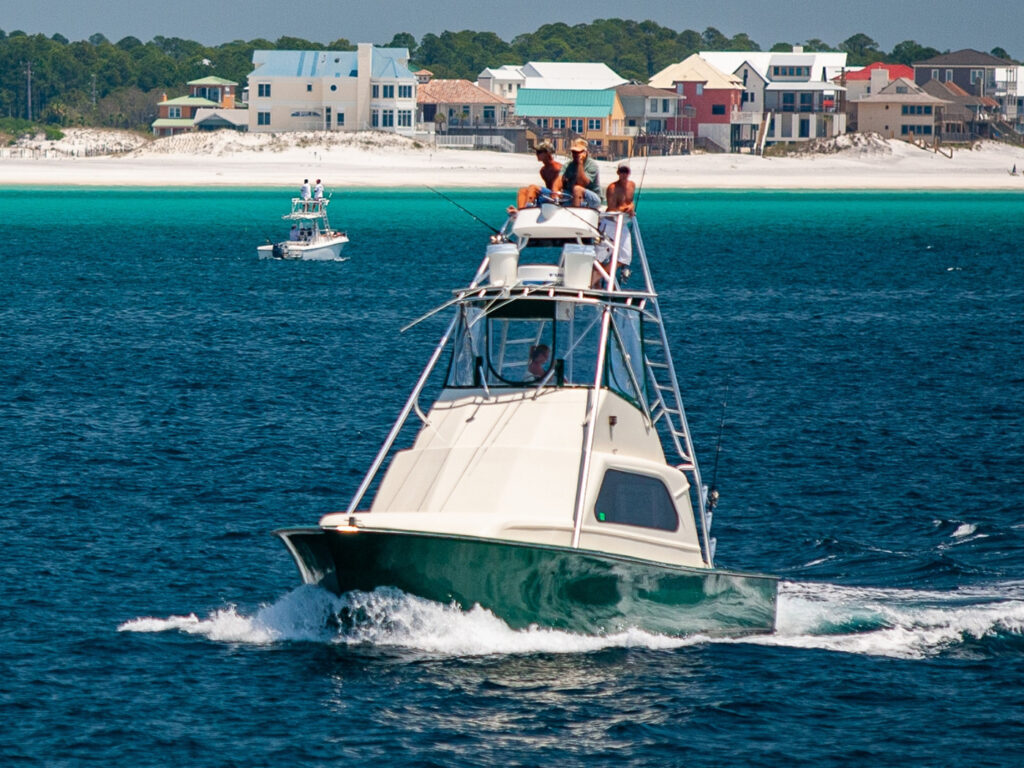
If the biggest cobia in the Gulf were fished out of the stock, the species would need time and protection to recover. Other factors, however, might also be at play. The Deepwater Horizon disaster in 2010 is sometimes cited, the suggestion being that its pollutants destroyed cobia’s spawn. Changing sea surface temperatures might also have a role.
Anglers like Wagner who observe their regional waters over decades point out another possible factor—cyclical shifts in migration patterns of pelagic and coastal pelagic species. Wagner, and other anglers on the Gulf and the Atlantic coasts, say that while Panhandle cobia have declined, catches along certain Atlantic coast locations have increased.
“In the last 5 to 10 years, they’ve actually crushed them up in North Carolina,” Wagner says. “We know that Gulf cobia go up the East Coast. Some of the fish that we’ve tagged along the Panhandle have shown up in the Chesapeake Bay.”
A Cobia Mystery
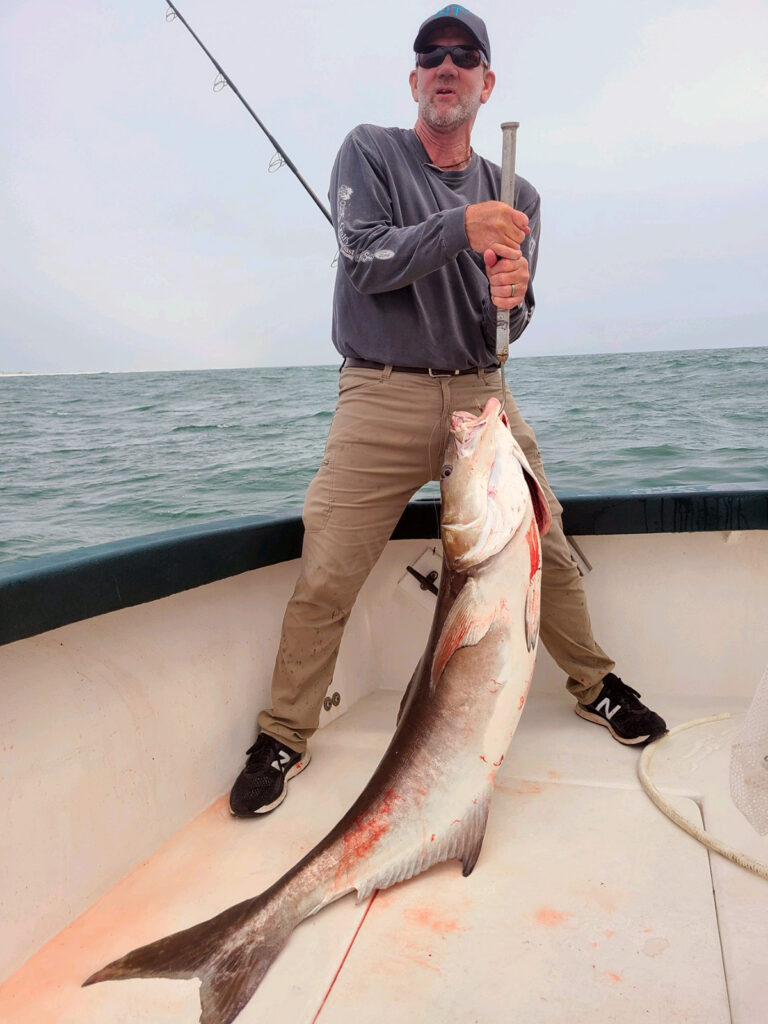
Read Hendon is Oceanic and Coastal Pelagics Branch Chief at the NOAA Southeast Fisheries Science Center. For years, Hendon conducted tagging studies on cobia with Jim Franks at the Gulf Coast Research Laboratory at the University of Southern Mississippi. Among other insights, their work suggested that there might be a more western route of seasonal migration for cobia in the Gulf and that some cobia overwintered around deep oil rigs in the north-central Gulf, but he has not seen studies that confirm a shift in migration patterns.
“Based on the most recent stock assessment and lack of any direct research into distributional shifts or changes in migratory patterns,” Hendon says, “the absence is more of a mystery from a scientific perspective at this time.”
Chris Wagner said the idea that they’re still in the Gulf has occurred to him. “If we found out that they were down deeper, out farther, and still going by the Panhandle, I could live with that. But if the cobia returned and I got to catch them with my grandkids, that would make me happy.”



